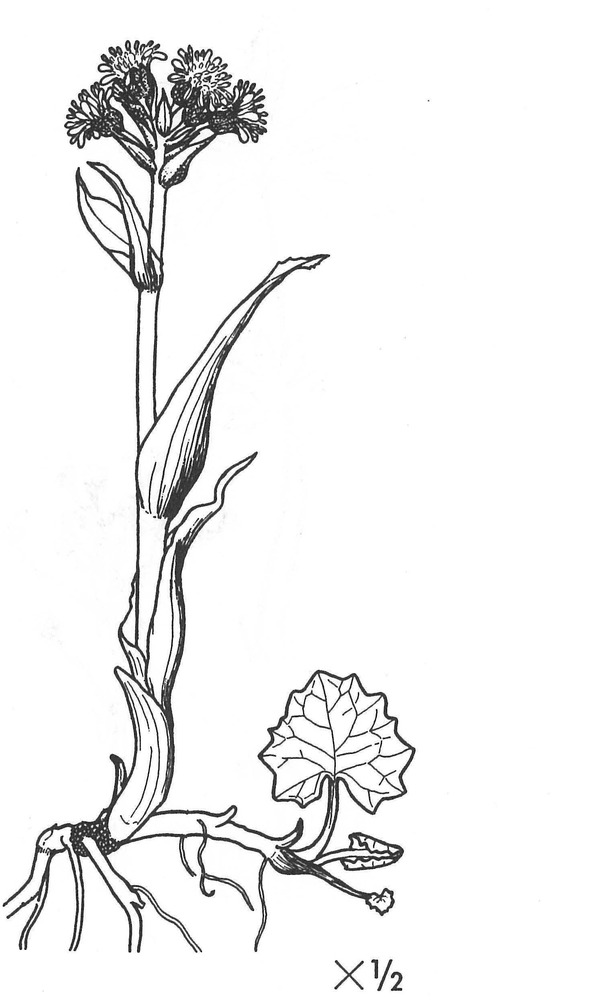| Petasites frigidus (L.) Franch. | |||
| |||
| Family | Compositae — APG family: Asteraceae | ||
| Synonyms | Nardosmia frigida (L.) Hook., Tussilago frigida L., Nardosmia angulosa Cass. | ||
| Description | Stems simple, from thick, creeping rootstocks, developing before leaves, either with mostly pistillate flowers or with mostly staminate flowers; scales of stem red- dish; basal leaves long-peduncled, triangular, with 5-8 broad teeth, entire in mar- gin, glabrous above, white-tomentose beneath; flowers more or less purplish; pappus with numerous long, white or yellowish-white bristles. | ||
| Ecology | Wet tundra, shores, along creeks. Described from Lapland, Switzerland, and Si- beria. | ||
| Taxonomy notes | Forms hybrid swarms with P. sagittatus and very frequently with P. hyperboreus, where the ranges overlap. Such intermediates have been called P. alaskanus Rydb., P. arcticus Pors., P. frigidus var. hyperboreoides Hult., P. frigidus var. corymbosus Crongq. in part, and P. frigidus var. nivalis Cronq. in part. | ||
| Uses | The root is eaten roasted by the Siberian Eskimo. Circumpolar map includes range of the plant called Nardosmia angulosa Cass. by Russian authors. |
This is a digital representation of Eric Hultén’s ‘Flora of Alaska and Neighboring Territories: A Manual of the Vascular Plants’, which was published by Stanford University Press in 1968. The book was digitized by C. Webb (at UAMN) as part of the Flora of Alaska project, with funding by the US NSF (Grant 1759964 to Ickert-Bond & Webb), and with permission of Stanford University Press. Data and images © 1968 Board of Trustees of the Leland Stanford Jr. Univ. Usage licence: Creative Commons BY-NC-SA 4.0. NB: You may find OCR errors; please refer to the hard-copy if in doubt.
